
When the phone rang in my office at Knight’s Armament Company the caller identified himself as Christos Epperson and he was calling to inquire about Reed Knight’s Institute of Military Technology (IMT) He also has a question regarding a 9mm United Defense Model 42 made by Marlin. He tells me his Uncle George fought with the resistance against the Germans on the Greek island of Crete during World War II, and specifically about connecting magazines together to maximize ready firepower.
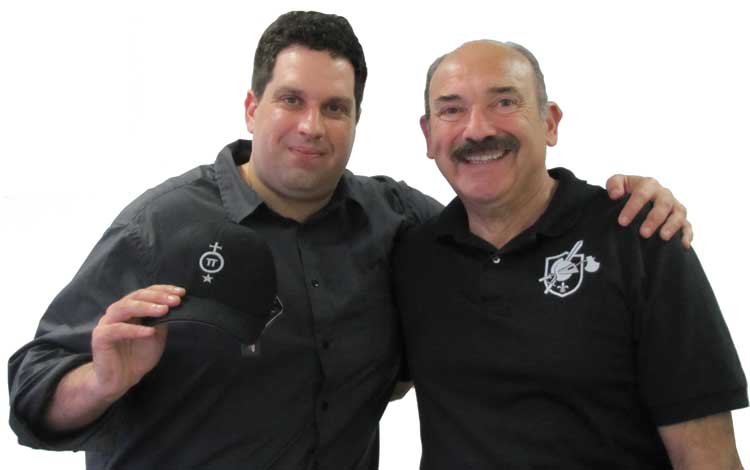
Christos sends me a quick email of his Uncle George, holding the Marlin and sure enough, magazines are joined at the front. Christos explains that his uncle realized that taping them together wouldn’t work, so he found a local blacksmith that welded them together. Was this the first incidence of such a field modification? Christos tells me he’s made a documentary about the Cretan invasion and the resistance movement and will send me a copy.
When the Germans invaded Crete they decided to try something altogether new in the art of warfare. Crete, Greece’s largest island, may be thought of as a huge “aircraft carrier” in the middle of the Mediterranean Sea and occupying it was a major strategic move for any army. To capture it, the military tactic the Germans used is now known as a “vertical envelopment.” The plan called for an assault on the island using a huge force of paratroopers and gliders carrying combat troops.
Allied forces stationed there, mostly British, Australians, and New Zealanders, would be far outnumbered and would be forced to leave the island or be killed or captured. The Cretan population had no local army as most of their young were in the Greek army fighting on the Albanian front. With nowhere to go and very little in the way of small arms and ammunition, the Cretans would be expected to surrender without much of a fight. After all, the Germans took the entire nation of France in just one week. With seasoned troops, modern equipment, and this new military tactic, Crete was expected to be under German control in a few hours.
However, the Germans ever in for a huge surprise. Had they checked their history books more carefully, they would have learned that Crete had been conquered many times by superior forces including the Venetians, Persians, and Turks. After fierce fighting, all of them eventually claimed the island as their own, but none of them ever really had full control. Every day each member of the occupying force was looking over his shoulder, lest his throat was slit by a swarthy local. Throughout history, every Cretan male has kept a dagger sheathed either in his belt or his boot and is well-schooled in its use.
For all the planning, superior firepower, and precise execution of the vertical envelopment, Crete did not fall in a day, or even a week. It was ten days after the invasion the Germans were convinced they had secured the island as theirs. But the Cretans had their own plan. There would be another day, the 11th day, in fact. On that day the Germans would pay.
I review the picture of the M42 with Reed Knight, and as I expected he’s got a wealth of information about it and shows me a sample in the IMT collection. Reed says magazine connection by using tape occurred well before this picture was taken, but he believes it may be the first time magazines were welded in theater.
Upon arrival of Christos’ documentary, The 11th Day, I sat down to watch it and was stunned. The dialogue is spoken by the actual people the story is about. Somehow, Christos had located enough of them still alive, and still able to recall the stories – truly fascinating.
So who is Christos? Where did he come from and what’s the story with this video? What else is he working on? There were many questions that prompted Christos to visit the IMT, which gave us the opportunity for this interview:
George: What made you decide to make a documentary about the Cretan invasion?
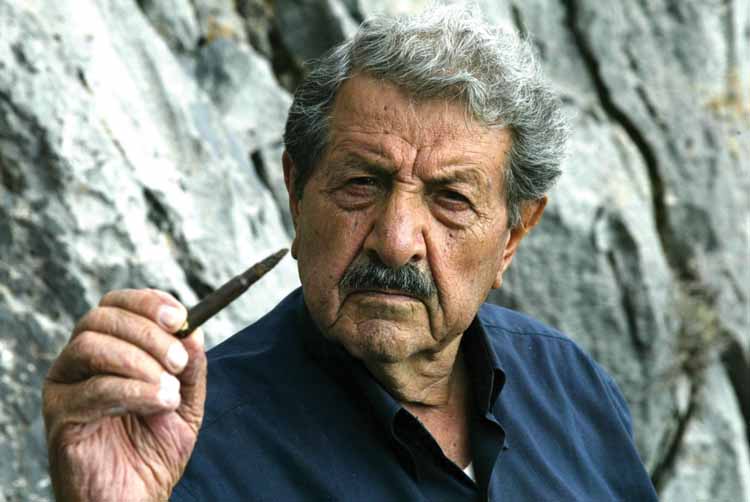
Christos: My family is from Crete. My aunts and uncles, all brothers and sisters, were spies for the Cretan resistance forces. When my aunt, Eleutheria, was caught stealing German maps for them, she confessed to working alone so that her two brothers and sister would not be charged. She was tortured and executed, and her three siblings were sent to concentration camps. So you see, this story is a part of my family’s history.
George: Doesn’t a documentary like this require a lot of time for researching facts, as well as finding and interviewing survivors?
Christos: Most of a documentary is research and World War II survivors are becoming fewer and fewer. I had to work fast, but even at that, script to screen took me 5 years.
George: Your documentary was very realistic. Where did you find reenactors and equipment?
Christos: There are good sources in Hollywood for reenactment supplies. Some items, like the pants, I had to have made. Others were very difficult to obtain, like German paratrooper boots with laces on the side. Having them made was cost prohibitive. As for the reenactors, believe it or not, most of them were the grandchildren and other relatives of the actual resistance fighters. Cretans are very patriotic so finding volunteers was not at all difficult. That is, except for the Germans. Cretans flatly refused to play them so I ended up down at the beach, recruiting tourists.
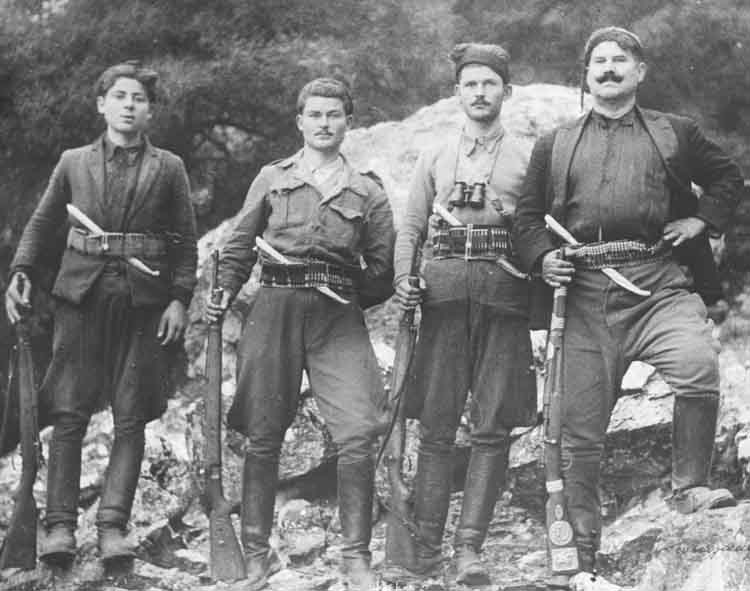
George: …and the guns?
Christos: I took some propane firing MG42’s and the rest were rubber Mausers, Lugers, and sub guns. It was a nightmare getting them into Greece and a worse one getting them back into the U.S., even though I had all the properly executed paperwork.
George: Tell us about the resistance and guns they used.
Christos: There were weapons on Crete when the Germans arrived. Most were really old – some were even muzzleloaders, but they used what they had. The German paratroopers were not armed when they jumped. The guns and ammunition were dropped separately, and it didn’t take long for the Cretans to figure that out. At that point it became a race between resistance fighters and the Germans to be first to arrive at the crates when they landed.
The Cretans were aided by a few British, New Zealand, and Australian troops who remained trapped on the island, and of course, these troops had their standard issue weapons. After the resistance force became an organized unit, the allied command realized their effectiveness and air dropped them more guns, ammunition, and supplies. British intelligence became very active on the island and sent them in a leader, schooled in guerilla tactics, a man named; Major Leigh Fermor. I was fortunate enough to locate him and interview him for the documentary.
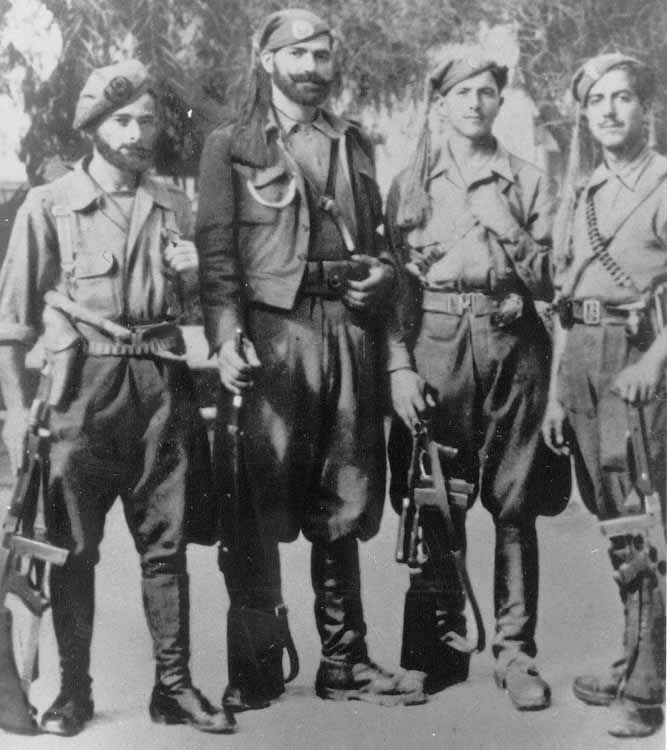
George: What did they find as the most and least effective weapons?
Christos: For close-in work, they liked the M42’s that were dropped by the OSS. For the most part these were country boys who grew up hunting and shooting in the Cretan mountains and learned marksmanship from their parents. They took a real liking to the German K98 and used it as a precision rifle removing one invader at a time. They used cover and concealment tactics taught by the military today. As for least effective, they had some machine guns but as they were so badly outnumbered, they preferred lightweight weapons they could use in hit and run type operations and of course, the Mausers for accurate fire.
George: Give us some examples of the effectiveness of the resistance.
Christos: The German troops were badly needed on the Russian front, but were bogged down on Crete fighting the resistance. The invasion of Crete was Germany’s first major defeat of the war, with half of the 8,000 elite airborne assault troops decimated.
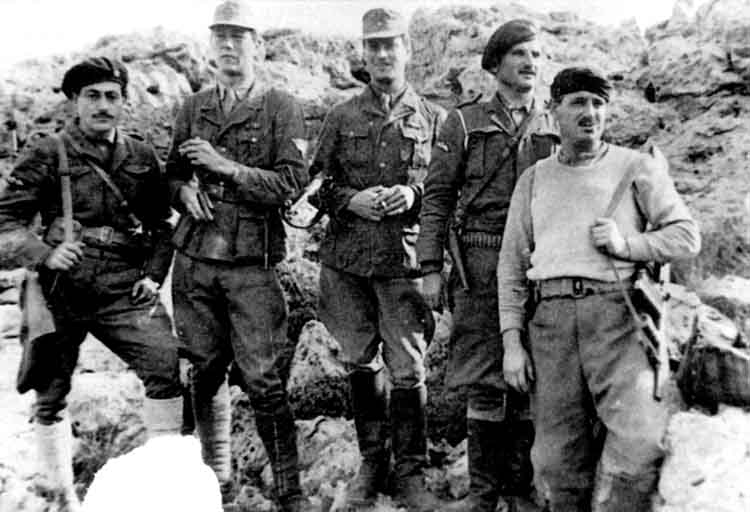
Bold raids were made by resistance fighter on airfields where a large number of German aircraft were destroyed. The Brits, New Zealanders, and Aussies worked effectively with the Cretan resistance. Inspired by the treachery of the Germans and emboldened by success after success of raids and ambushes, the resistance conjured up new and more ambitious plans. At one point they actually captured the German Commander and Chief of the German forces on Crete, General Kreipe. They shuffled him off to North Africa for intense interrogation – the only kidnapping of a German general in the entire war.
Besides these hit and run raids, they also found that when the Germans turned the 88mm guns on them, their tactic was to move closer to the big guns and pick off their operators with precision small arms fire.
George: I understand women, children and even priests played major roles in the resistance. Tell us about that
. Christos: Young children focused their play around the Germans and recorded whatever was of interest to the resistance. The allies had intel on the contents of every ship that offloaded cargo onto the island, including the number of crates and their markings. Teenage girls and women fought alongside the resistance or made frequent trips to bring them food and supplies.
When the resistance hatched the plan to capture the German general, they had stolen some German uniforms, but the insignias weren’t right. Local women, anxious to do what they could to aid the resistance, volunteered to embroider new ones that matched the ones worn locally. One old man told me he was only nine when the Germans invaded. Every day he would roll heavy rocks out into the road, and every day the Germans would have to stop their trucks and roll the stones back. He told me that at his age, he couldn’t do much, but he could at least slow the Germans down. My Uncle Theo was the Orthodox Bishop on the island by day, but by night he used his church to run an effective gun smuggling operation.
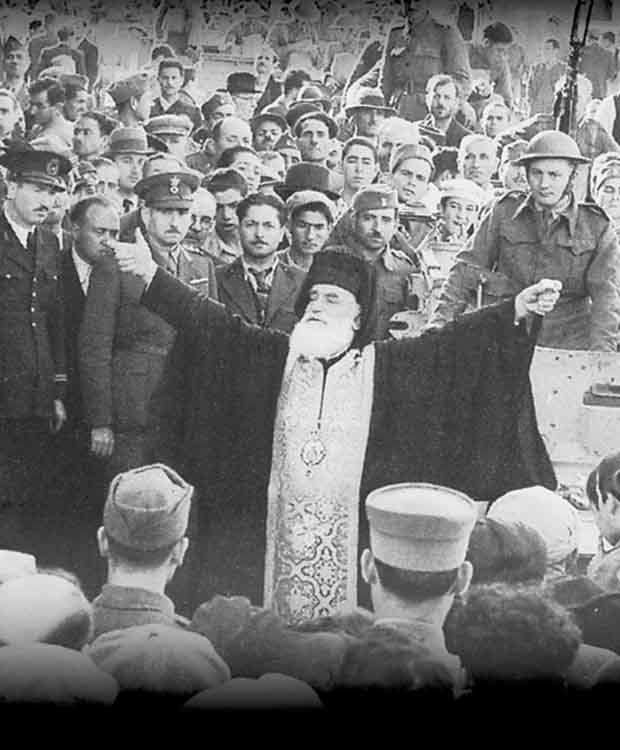
George: You said a surprising thing happened when you showed up on Crete with dummy guns for the reenactors. What was it?
Christos: Whenever I brought out the replica guns to do the filming, the Cretans didn’t want to have anything to do with them. They preferred to use their original guns – you know – the ones that were actually used by the resistance.
George: Come on! The Greek government only allows shotguns for civilian ownership.
Christos: There is an old Cretan saying about the importance of their guns. A Cretan man will tell you: “If I had to pick between giving up my wife, house, or my gun, I’d keep my gun, because with that, I can get the other two back.” I heard this often while I was there, and from different people.
George: You’re telling us these guns are still around today?
Christos: Cretans historically pass them down to the oldest son. Whenever I went up into the villages and we started talking about the invasion, the resistance and my documentary, out came the guns. These guns drew blood in the defense of Crete and have both a symbolic and a defensive use. The Cretans wanted these guns to be used in the documentary.
George: So, this recent photo of your Uncle George holding the Marlin at the war memorial; you’re saying it’s the same one he’s posing with during his resistance days?
Christos: Yes, this gun was dropped by the OSS and was very popular with the resistance as it could use captured ammunition because it was chambered for 9mm, which was available from the Germans. It was developed by United Defense and manufactured by Hi Standard and Marlin. They were very well made. My Uncle George’s was a Marlin and he said it shot tight groups and he never had a problem with it.
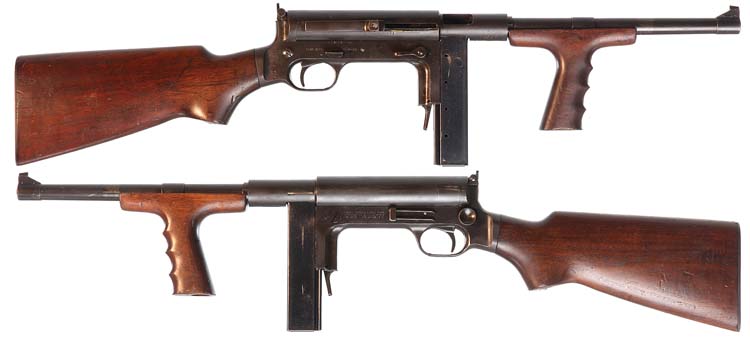
Besides the M42’s I brought, there were plenty of Greek Mausers that literally came out of the Cretan woodwork. One was even nicely decorated with silver icons. The one that surprised me the most was a Bren gun. They insisted on taking me to the exact spot where it was air dropped by the OSS.
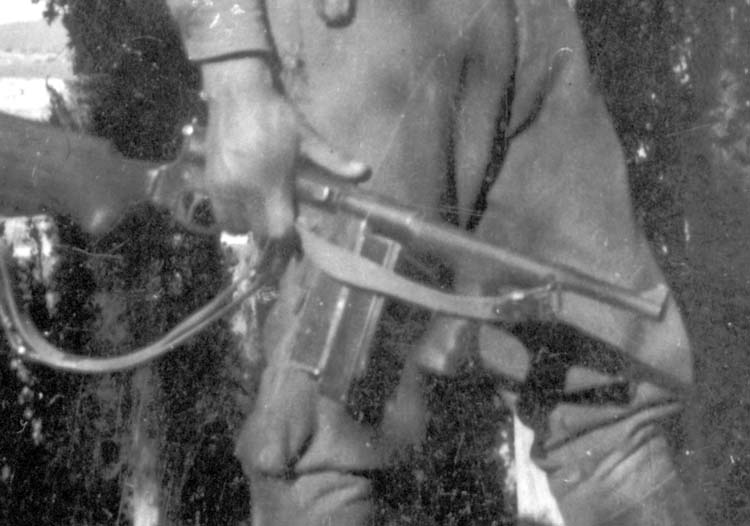
George: It seems not only the guns were sacred but the battlegrounds as well.
Christos: It was even more complicated than that. Most of the land was under control of a monastery. I had to get special permission, so I brought along a priest and my Uncle George to help me negotiate. People kept telling me I was crazy as no one goes up there. The last ones who did were the Germans, and we know it didn’t work out very well for them! I gave the monks 13 space heaters and they gave us 3 shepherd guides. Two of the camera men were non-Greeks and had to get baptized with Cretan names.
My Uncle George Tzikas had a personal reason for finding one spot, and to our amazement, he took us right there. It was a place where he had a shootout with a couple Germans. They kept shooting at him but kept missing – hitting the tree behind him. Just when he had one of them in his sights, he squeezed the trigger but the round was a dud, so he extracted it, chambered another round and maneuvered around until he finally got them both.
George told me he had recurring nightmares about that event, only it was a variation that included the dud round but ended with him, not the Germans, getting killed. He insisted we use our metal detector to find the dud, and we did! Since he’s recovered that round, he says his nightmares have gone away.
George: What about pistols?
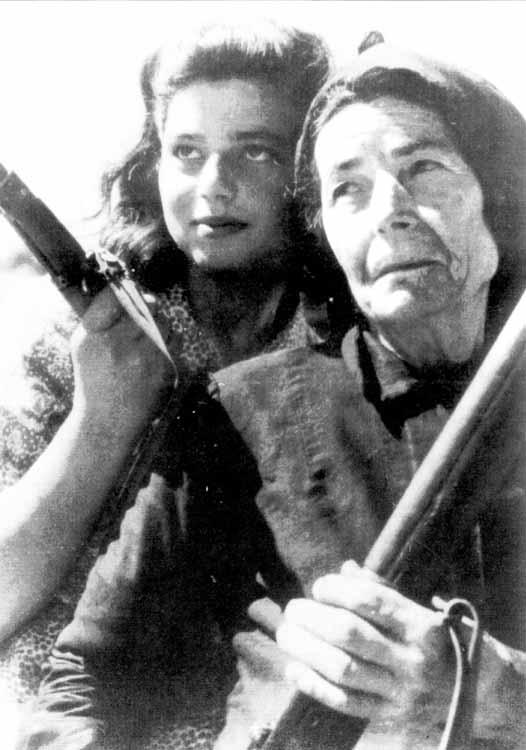
Christos: It was important for every resistance fighter to carry a pistol, a grenade, or both. The pistol wasn’t for offensive use, though. The resistance fighters had the attitude they were dead anyway and they knew what awaited them if they were captured. The pistols were to be used on themselves if that time came, hopefully taking a few Germans with them.
George: How do our readers get a copy of your documentary?
Christos: The best way is through www.crete1941.com
George: Tell us about your next project.
Christos: I’m working on a documentary called: Outpost Harry. During the Korean War, there were three outposts: Tom, Dick, and Harry. Five battalions – four American and one Greek – took turns defending the outpost, and each of them was overrun with Chinese. When the Greeks took their turn, 3,000 Chinese were held off by 150 Greeks and American soldiers. They became known as the “Sparta Battalion” after their commanding officer told them, “If 300 Spartans could hold off 100,000 Persians, a hundred and fifty of us should have no trouble against a few thousand Chinese.”
There is a gymnasium at Ft. Benning named Outpost Harry to commemorate the bravery of the men who fought there.
George: What did the survivors tell you about the guns used in this conflict?
Christos: Each time they were overrun, they called in artillery on their own position. These barrages resulted in huge amounts of airborne dirt going airborne. Many of the veterans told me about their guns jamming as a result. I’d be interested in finding out more about that and what we’re doing today so that doesn’t happen again.
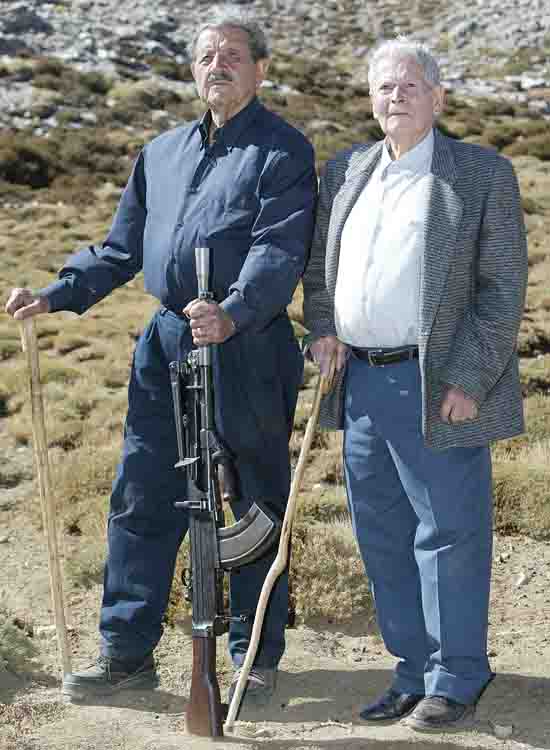
George: Roger that. We’ll be looking forward to seeing Outpost Harry when it’s done and we sincerely appreciate you taking the time to talk with us today – thank you.
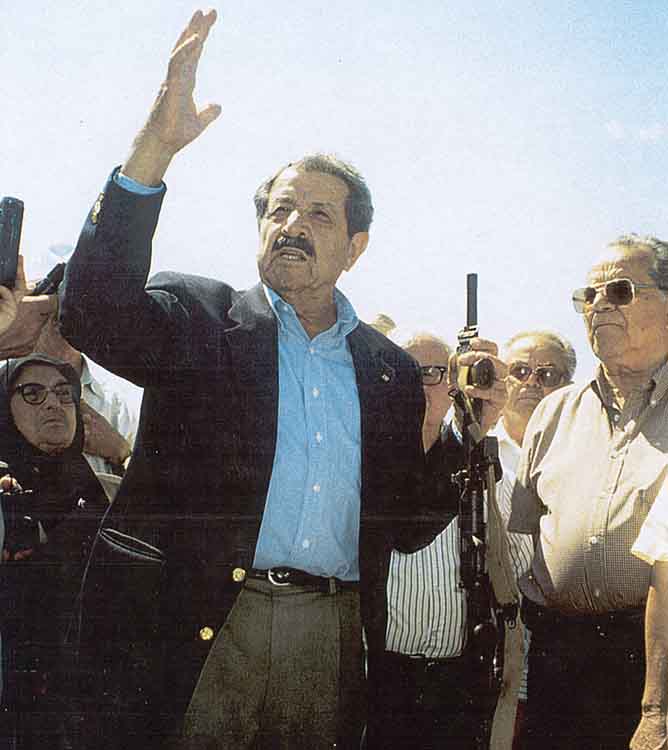
| This article first appeared in Small Arms Review V14N4 (January 2011) |











